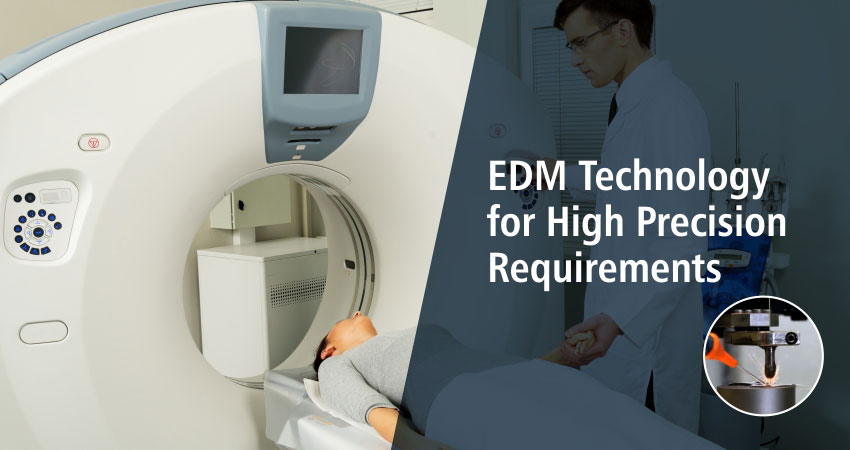Manufacturing medical devices includes a diverse range. Starting from hip joints or replacement devices to simple tools such as tongue depressors, bedpans to critical components in pacemaker, orthopaedic inserts to advanced and other surgical devices.
Range of Materials
Implantable devices like screws and replacement joints, as well as orthodontic braces and other dental pieces, are usually made from extremely tough materials. Not only is biocompatibility essential, but repair options are limited, so they have to survive years of use. For replacement joints titanium, cobalt chrome and stainless steel are favoured while nitinol, an alloy of nickel and titanium, is used for catheters and stents as well as in orthodontics. All these metals are hard to machine with conventional removal processes.
The real Challenge
Medical tool require rigorous sterilisation and should never ever corrode under any conditions. Stainless steel is used extensively, formed into complex shapes for ease-of-use.
Precision is of highest importance when it comes to medical devices. The complex geometries are hard to produce by conventional machining methods. In addition, some components have sub-millimetre features and distortion during cutting, which is a significant issue.
Non implant devices are many times made up of plastics. Moulds for these components must be highly precise, with high repeatability. Surface finish requirements are usually demanding and lifetimes of millions of cycles are expected.
Steel components, implants or non-implant, require accurate machining and are often highly expensive to produce. It’s not uncommon for a steel tool to undergo hours of hand polishing to arrive at the final shape and finish. But the hand polishing also increases intra-cavity variation.
The EDM Advantage
The biggest advantage is that EDM process uses erosion based machining and does not cut the material. The absence of cutting forces keep the component free from distortion. As a result, several benefits are observed
• Machining speed is independent of workpiece hardness
• Precise cutting which is basic need of a medical equipment
• Thinnest possible walls, shapes and designs is possible
• Drilling of long, deep hole are possible
Unlike most conventional machining processes, there is no need to rotate either tool or workpiece. This allows machining of sharp internal corners, even for blind pockets. EDM can produce complex forms and do so repeatedly and with high accuracy. This helps to save time compared to multiple conventional machining processes and achieve smooth blends from one radius to another.
Di Sinking EDM or Spark Erosion Machining
This is used for creating cavities, typically for implants, like hex form on the end of bone screw or creating a cavity on the mould itself.
EDM Drill
Used for Medical components which require small holes such as surgical injection moulds. It is also widely used for machining of curved workpiece surfaces where a conventional drill has a high chance of breakage.
About Sparkonix
Since 1969, Sparkonix has been proud supplier and innovator in manufacturing Precision EDM machines to companies who have high regulation norms such as Aerospace, Defence, Medical, Nuclear etc.
Get in touch with our expert team to know more.

